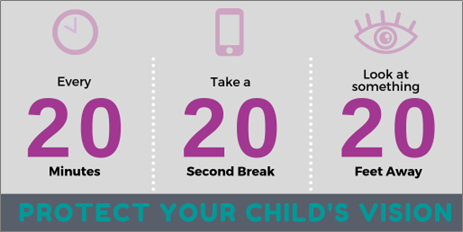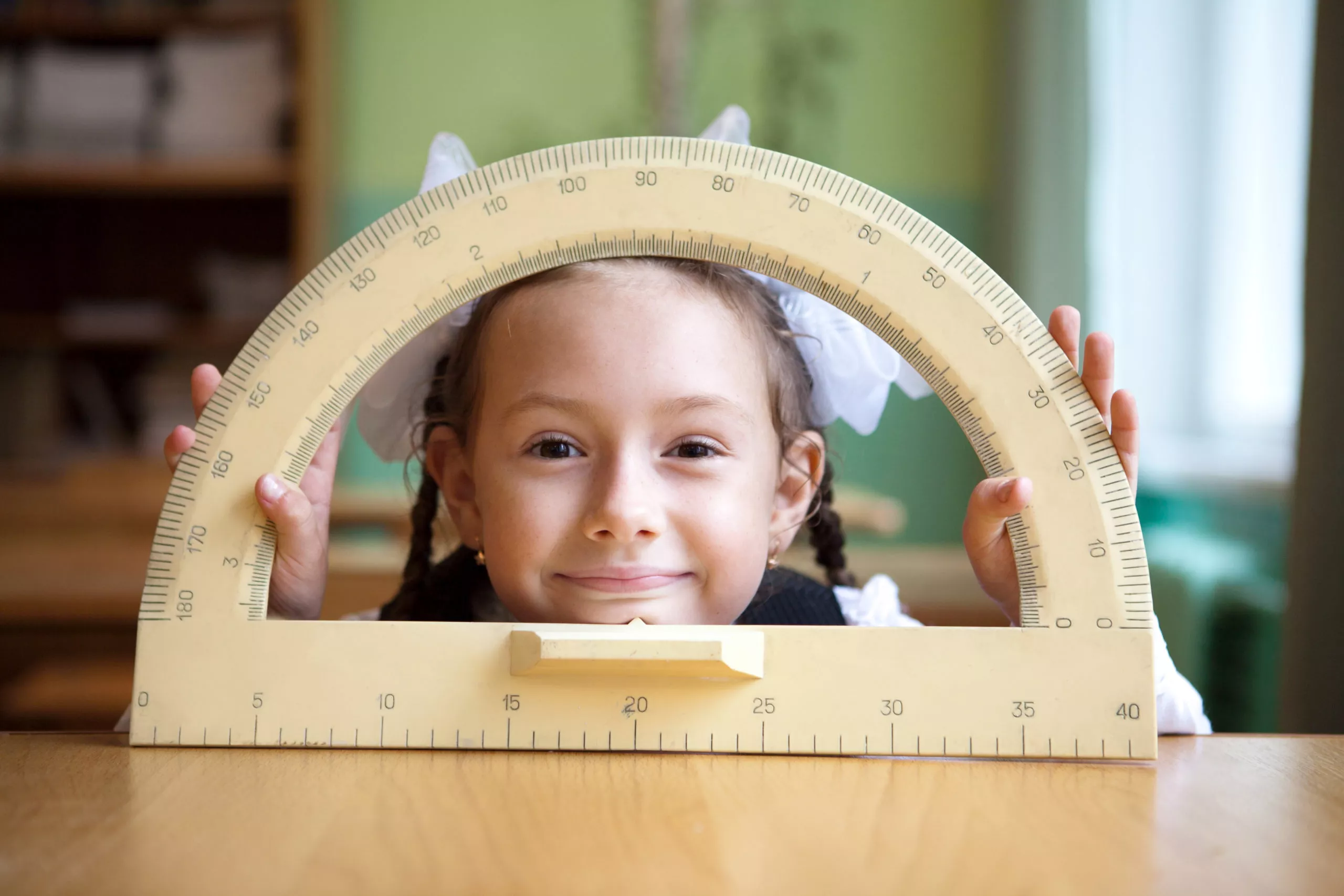
×
We’ve created a quick and easy-to-use guide that provides definitions for eye conditions, vision terms, and organizations you’ll see here on MyMyopia®, hear about from an eye doctor, or that you might come across while doing research about kids’ vision health. Knowing these definitions is a great place to start in playing a key role in keeping your child seeing, playing, and living with their best eye health.
Accommodation is your brain and eyes’ response to trying to view something up close, such as reading a book. A muscle known as the ciliary flexes the lens inside each eye to change its focal power from far to near. Accommodation allows you to focus on near and far objects interchangeably depending on where your brain tells your eyes to focus.
Astigmatism is a condition in which the cornea has an abnormal curvature that can create numerous focal points to point in different locations. This can make objects, both up close and far away, look blurry.
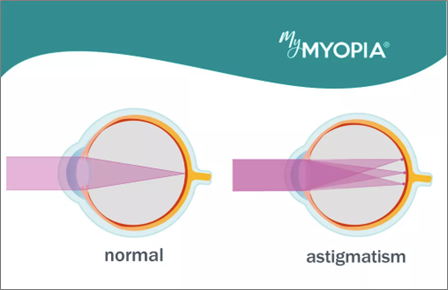
The axial length of the eye refers to how long the eye is, front to back. In children with rapidly progressing myopia, axial length will increase faster than the normal rate as the eye grows during childhood. Measuring axial length not only helps determine the progression rate of myopia.
The cornea is the clear outer tissue at the front of the eye. The cornea works together with the lens to help your eye to focus light so you can see clearly.
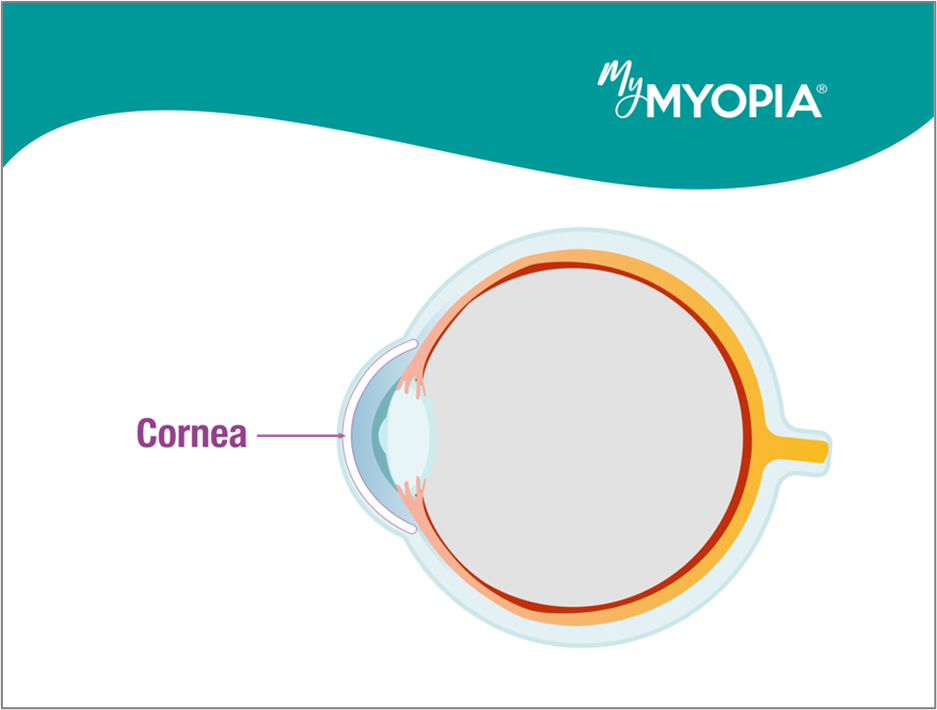
A dilated eye exam is when your doctor gives you eye drops to dilate (widen) your pupil to check for eye diseases. Dilating your pupil lets more light into your eye — just like opening a door lets light into a dark room. Dilation helps your eye doctor check for many eye problems, including diabetic retinopathy, glaucoma, and age-related macular degeneration (AMD).
A diopter is the numerical unit used to measure the amount of optical correction, or focusing power, that your eye requires to see clearly, in either your eyeglass or contact lens prescription. A one diopter increase in myopia raises the likelihood of developing myopic macular degeneration, or loss of vision, by 67%.
Myopia results from abnormal axial elongation, meaning an increase in the axial length of the eye, which leads to a refractive error, blurring objects viewed at a distance.
Depending on what the doctor might be treating or evaluating by testing, eye exams take about an hour, and might include reading an eye chart or using a lens to visualize the small structures inside the eyes. In addition to visual acuity tests, eye exams also include eye teaming skills (how the eyes work together), eye movements, and the ability of the eyes to comfortably focus.
Eye strain can be caused by spending too much time looking at up-close objects like books and screens. Digital eye strain refers to mobile devices, TV screens, and computer screens.
Farsightedness, also referred to as hyperopia, is a condition where things that are near are harder to see compared to things that are a further distance away.1 Distant objects can be seen clearly, but close ones do not come into proper focus—your eye can’t correctly focus the light that enters.2
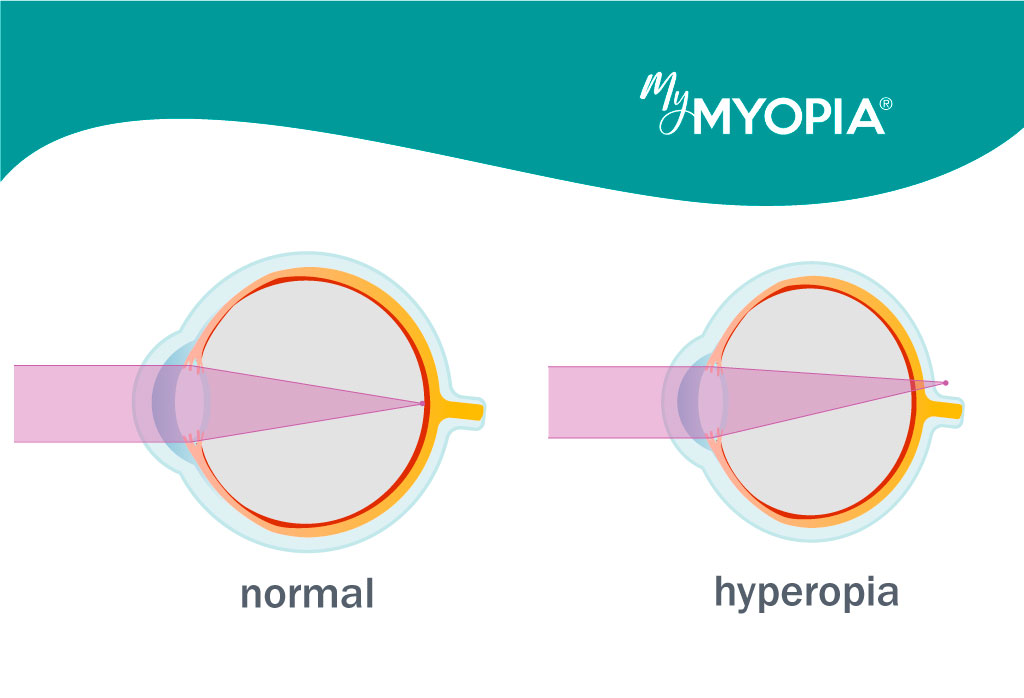
The Global Myopia Awareness Coalition (GMAC) is a coalition of leading ophthalmic companies and eye health associations with a mission to increase public awareness about the growing prevalence and consequences of myopia, especially in children.
>> Learn more about GMAC on MyMyopia® here.
An eye is considered to have high myopia if it requires -6.0 diopters or more of lens correction. Patients who develop high myopia are a much higher risk of long-term complications like glaucoma, cataracts, retinal detachment and myopic macular degeneration.
The iris is the colored part of the eye that surrounds the pupil. It regulates the amount of light that enters the eye.
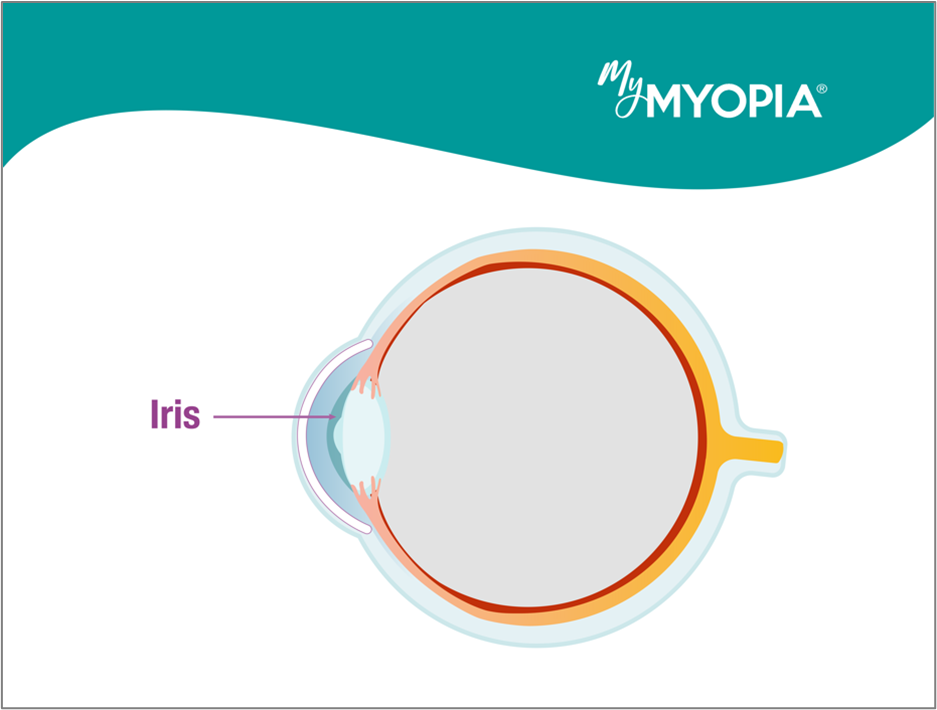
Myopia that develops in childhood is often called pediatric-or juvenile-onset myopia.
Left untreated, high myopia is associated with an increased risk of developing sight-threatening conditions such as glaucoma, cataracts, retinal detachment, and macular degeneration.
>> Learn more: What are the long-term risks of myopia in children?
Eye drops that are given to children at bedtime. Some studies have shown that these drops may help to slow down myopia progression. This type of eye drop is only available today from compounding pharmacies and not FDA-approved to treat myopia. Novel eye drop options are currently in development and will seek FDA approval as treatments for myopia.
Specialized multifocal contact lenses are worn during the day to improve vision and aim to slow the progression of myopia.
Myopia, or nearsightedness, is a condition where things that are far are harder to see.1 Myopia results from an abnormal elongation of the eyeball, which leads to a refractive error, blurring objects viewed at a distance. In other words, distant objects appear blurry until they are brought close to the eyes.2
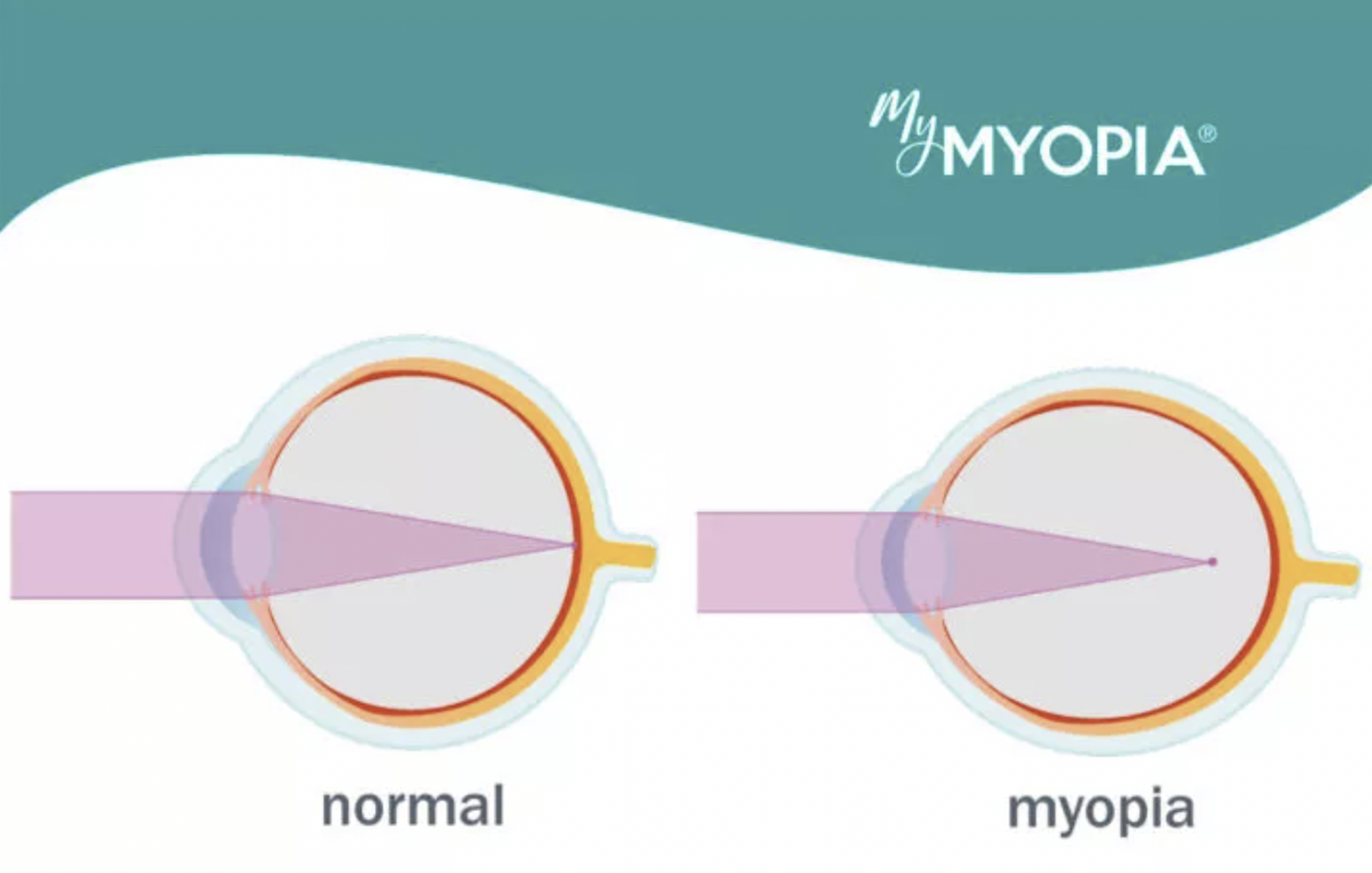
The term used to describe specific treatments that eye doctors prescribe for their patients to slow the progression of nearsightedness in children.
>>Learn more: My child’s eye doctor is talking to me about myopia treatment options. What do I need to know?
Myopia worsens as the eye grows longer. When that happens, we call it myopia progression.
>> Learn more: My child’s myopia is getting worse. What should I do?
Near work includes activities done at a short working distance such as reading, studying, computer use, playing video games, mobile device use, and watching TV.
Reference(s):
Ocular health is the overall well-being of one’s vision. Good ocular health implies that vision is 20/20 or better without correction, and the eyes are disease-free.
Improves vision by applying specially designed lenses worn overnight, while sleeping, and removed in the morning. These contact lenses improve vision by reshaping the cornea, or surface of the eye.
An ophthalmologist is a medical doctor who specializes in eye and vision care. Ophthalmologists can diagnose and treat a wide range of conditions. Ophthalmologists are eye doctors with advanced medical and surgical training.
Optometrists are eye doctors who receive their training in optometry school. They help patients maintain healthy eyes and good vision and treat a wide range of eye conditions. Optometrists can diagnose and treat many eye conditions and have a wide array of tools and resources for patients.
Refractive errors occur when the shape of your eye keeps light from focusing correctly on your retina, a light-sensitive layer of tissue in the back of your eye.
The symbol “Rx” refers to a medical prescription provided by a doctor or other healthcare professional. In vision care, a minus sign (-) on a prescription is for myopia, or nearsightedness. The plus sign (+) on a prescription is for hyperopia, or farsightedness.
You might know single-vision lenses as conventional glasses. Single-vision glasses correct vision, but they do not slow down the progression of myopia or address the underlying issue that the eye is growing too long.
Reference(s):
Visual acuity is a measure of the ability of the eye to distinguish shapes and the details of objects at a given distance. It is important to assess visual acuity in a consistent way in order to detect any changes in vision.
Vision screenings typically test vision by reading an eye chart from a distance and measure their visual acuity. While these screenings can uncover some vision problems, they can’t measure precise changes in the child’s vision and eye growth.
>> Learn more about the difference between vision screenings and eye exams here.
The 20-20-20 rule is a helpful habit to encourage. To help prevent eye strain from near work or use of digital devices, you should encourage your child to take a 20-second break to view something 20 feet away every 20 minutes while they’re doing any near work.
